STREAM Activity: Watershed
Create your own watershed!
Activity best for children ages 2 and up
A watershed is a land area that channels rainfall and snowmelt into creeks, streams, and rivers and eventually to outflow points such as reservoirs, bays, and ocean.
San Diego county is home to 11 different watersheds. No matter where you live you are in a watershed. Some watersheds are really big and cover hundreds of miles while some watersheds are really small. The largest watershed in the United States is the Mississippi River watershed and collects water from 31 states! We can help keep our oceans and bay clean by keeping our watersheds clean. Things you can do at home include making sure that you don’t litter or let trash get washed away when it rains and by cleaning up after pets when they use the bathroom outside.
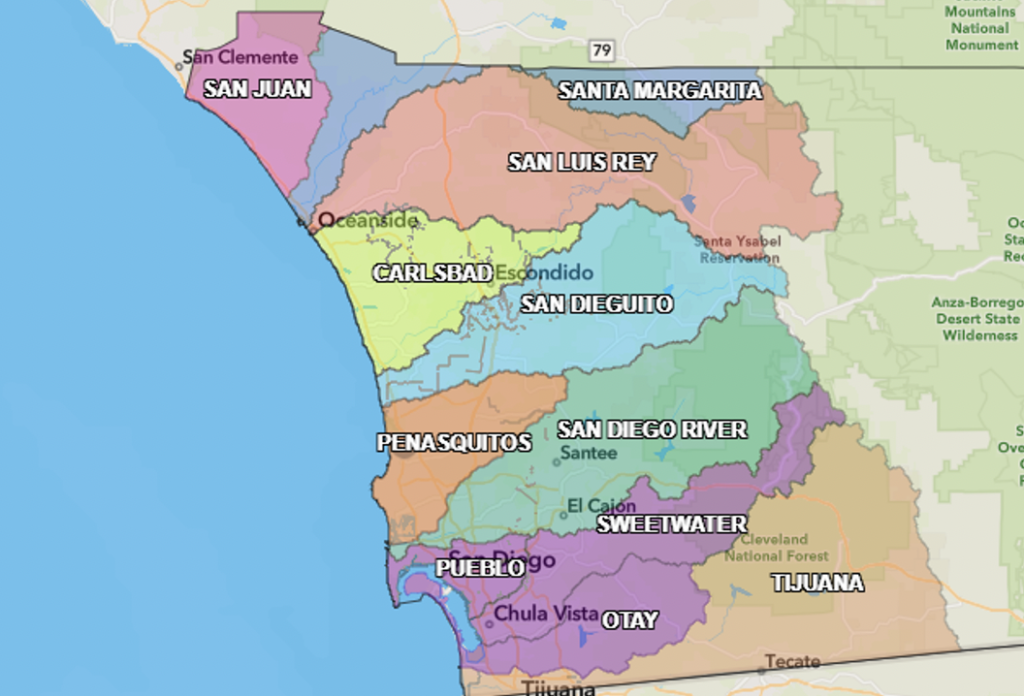
Materials:
Tin foil or aluminum foil
1 tote, bucket, or other large holding container
5-8 solid objects of varying sizes
Sand or dirt
Watering can/container
Guiding Questions:
Can you recreate mountains or hills to see how water flows?
What happens when the water finds a flat area?
Directions
Step 1
Gather the materials listed above. You’ll need these to create a watershed!
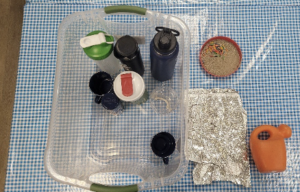
Step 2
Place your solid objects in the clear tote any way you would like. Here is an example to reference!
These objects will become the structure of your watershed. You are creating what will soon become your landscape and geology.
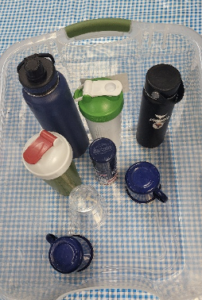
Step 3
Cover your objects with foil starting with the lowest level and working your way to the top. By putting the foil over our objects we create a single surface that will allow water to runoff or pool just like a real watershed.
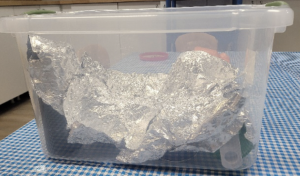
Step 4
Sprinkle sand and any other small materials you have nearby. The colorful debris in the photo represents pollutants! By making these colorful it is very easy to see what happens to pollutants in a watershed.
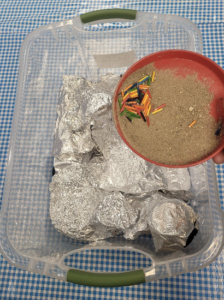
Step 5
Add water with a watering can or spray mister to reproduce a rain event.
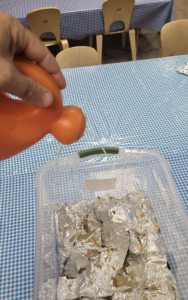
Step 6: Make Your Observations
Use this opportunity to observe your own watershed to see if you notice how the water flows through your model. Try adding more sand or more polutants to see if the outcome is different the more you try it.
Observation questions: Can you identify where lakes are forming? What is your biggest river? Do you have an ocean or bay that everything drains to?
Grown Ups-Are you looking for more ways to extend your child’s learning? Check out these extension activities to build upon today’s STREAM activity!
Reading Connections
All the Water in the World by Katherine Tillotson
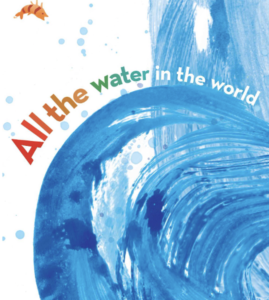
Share your watershed with us on Instagram by tagging @sdcdm320!
Questions about this activity? Email education@sdcdm.org

